Panagsama Beach
Cebu, Philippines
personal experience
To get and then work on photographs for an upcoming ecosystem guides book "Tropical Open Oceans', I need easy access to deep water (and coral reefs for another book) next to accommodation, that allow me to jump in the water, to be able to get out and shower and have a coffee while I work on the computer, then jump back in again at my leisure! I had the feeling Panagsama Beach would be perfect for this scenario, and so I checked it out in 2011, and it was!
the reef...
There are plenty of places to stay along the coast. There is not really a 'beach' here as such! You can get some nice cottages for about 30 dollars Australian a night. There was plenty of choice. I was there in the quiet wet season, but I hear it is pretty noisey the further north along the beach that one goes. There is a wall with a deep water drop-off only about 20-30 metres off the 'beach'. The coral is pretty good, and the wall goes for quite a way along. I swum about half a kilometre in eiher direction and the wall kept going...
the wildlife...
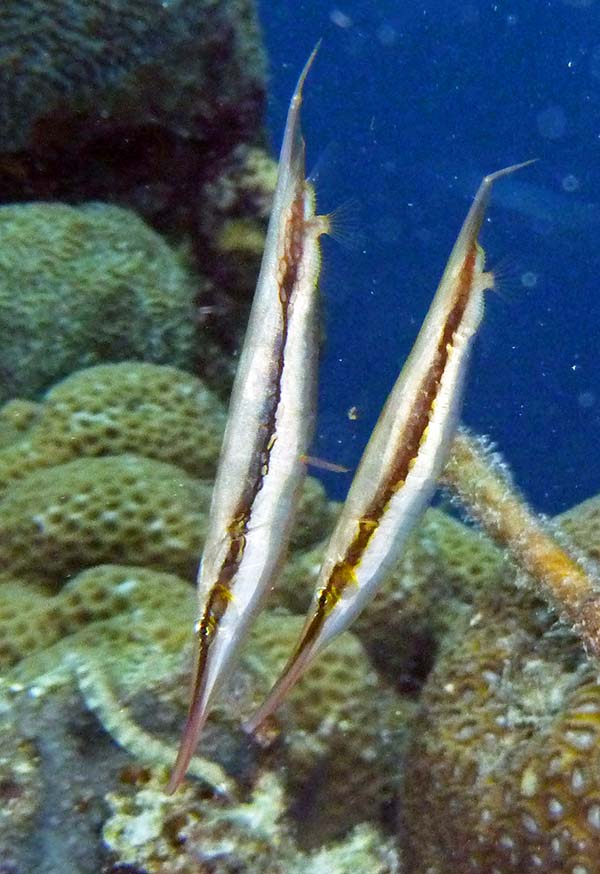 razor fish, the Philippines (Damon Ramsey)
razor fish, the Philippines (Damon Ramsey)Beside colourful parrotfish and butterflyfish, there were also turtles, there was also some things that I don't get to see very often.
There were also quite a few of the 'razorfish' about, these are some of the most distinctive fish, as they one of the few fish swim vertically, appearing just to hang there in the water like loose sea grass or mangrove seedlings.
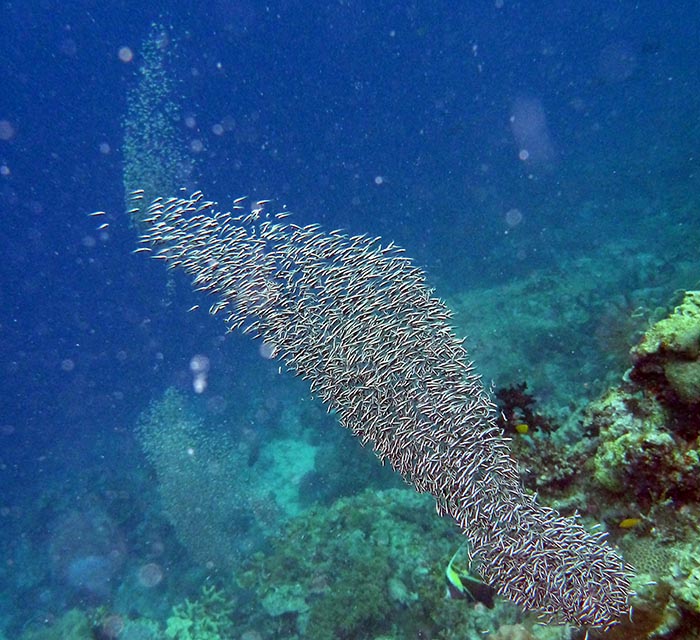 school of fish (Damon Ramsey)
school of fish (Damon Ramsey)Small fish often school in tight groups. These are the local 'sardine runs'. They are not as big as along the South African coast, but they are getting a good reputation as being more predictable and easier to see. Along this reef edge, one could see several great examples of this. Young fish probably do this to avoid predation, as more eyes can keep an eye out, and grouping reduces the chance of any one fish getting eaten. However, I also think these schools forms shapes that scare predators. Some of these schools on this reef edge looked sea snakes. (They can be even bigger. I was once standing on the deck of a ship at night in New Guinea looking down ino the water and saw what appeared to be the biggest shark I had ever seen! But after about thirty seconds it swirled and re-arranged itself to reveal it to be a just a massive school of many, very tiny fish!)
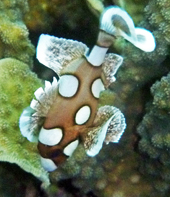
On this reef, I also got to see a juvenile of a 'sweetlips'. When these fish are adults, they are quite large and colourful and lurk beneath reef ledges during the day. When they are young, they ofen have very different colours and patterns. This one moved around, wriggling non-stop, and they are said to perhaps be impersonating a toxic flat worm.
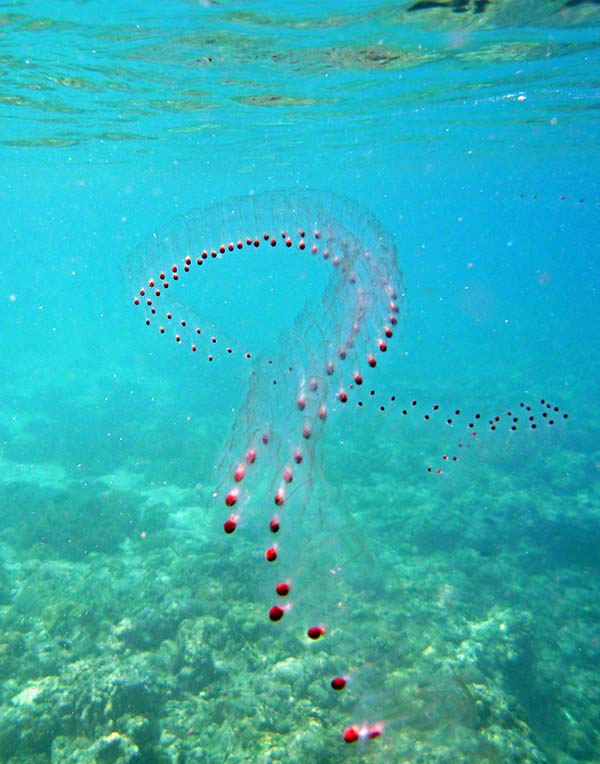 salp chain (Damon Ramsey)
salp chain (Damon Ramsey)During high tide it washes in a lot of rubbish like plastic bags, as well as seagrass, but this also means it is easier to get in the water and it also brings in interesting critters. Some of these are jellyfish which you may feel give you a bit of a twinge, but others are salp, which form long chains; great images for the open ocean surfaces books; I have been chasing these chains for some time!
warning:
When you walk out to the reef, if it is low or medium tide, be careful where you step, especially where there is rocky reef, as there will be lots of spiny sea-urchins; there are two species, the black Diadema and the more colourful one; both hurt if you tread on them. In fact, just a slight prick from a black sea urchin will result in awful pain that lasts for days; so it is best to try and get vertical and swim as soon as the depth allows, so you can both see and swim over the nasties. Once you get out there, in the wet season you might get a few tingles from jellyfish. It is always prudent to wear a shirt to protect both against these sorts of stings on the chest/heart area, and also to prevent getting sunburnt. Don't worry: you don't need a tan, our pasty pale skin is considerd a beautiful thing to attain in many Asian and Pacific countries!
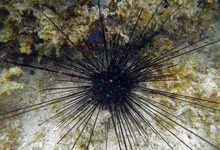 watch out for the sea urchins!
watch out for the sea urchins!Access:
From Cebu city: get a taxi (about 2000-2500 pesos for a 2.5 hour ride), or if you want to keep it cheap: a taxi/tricycle to south Cebu bus station, then a bus (3 hours) to Moalboal, then another tricycle to beach, for a total of a couple hundred pesos. If it is quiet, you might be able to get a really cheap taxi ride back to Cebu from Moalboal; I got one for 700 pesos last time.